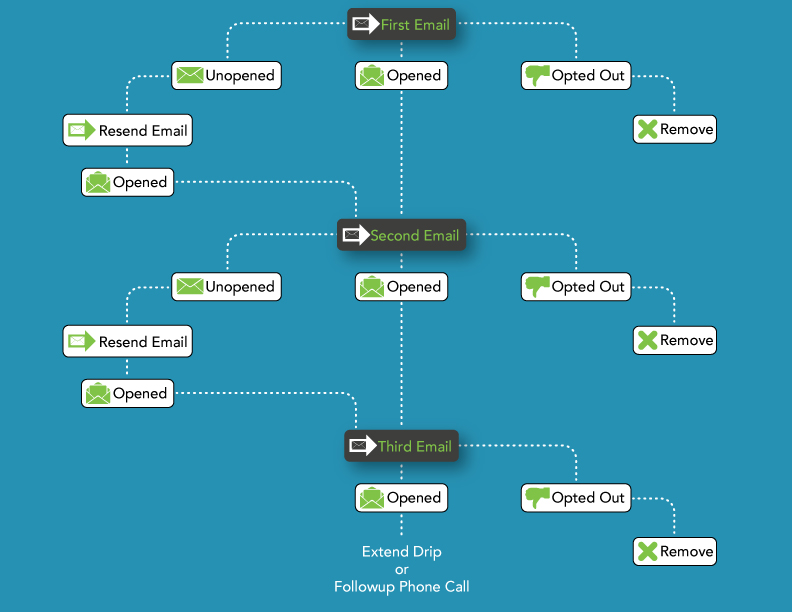GreenRope Blog
Title search: ✖
|
Show All (637)
#CoolerChat (7) All About GreenRope (172) Content Marketing (66) CRM (191) Customer Experience (79) Digital Transformation (8) Email Marketing (6) Event Recaps (2) Everything Small Business (46) How-To (136) In the Clearing with Lars (25) Infographics (4) Marketing (149) Marketing Automation (60) Monthly Updates (26) Press Release (1) Sales (76) SMB (140) Social Media (20) Tidbits for You (116) Websites & SEO (4) Weekly Roundup (16)
10 Surprising Things You Didn't know about Client Services & Search Marketing Manager, Lisa Frampton
Disqualifying Leads Without Alienating Them as Future Customers - Part 2: Cultivating Non-Leads with Automated Marketing
4 Ways to Get Your Email Marketing in Front of the Right Audience Through Personalization & Segmentation
Total Cost of Ownership: What does it mean and how can you avoid costly, unsuccessful implementations.
|
Lead Nurturing with Drip Campaigns
Providing your leads, clients, and customers with correct, correlating content at the right time is a key factor in lead nurturing. However, many businesses do not understand the necessary tactics to successfully implement a lead nurturing program. Executing successful drip marketing campaigns that encourage potential clients takes research, strategy, and the right technology. To effectively nurture leads and consistently engage with customers and clients, a business must first invest in an integrated CRM and marketing automation platform. Technology, in conjunction with your content and overall strategy, allows a business to successfully educate, inspire, and convert. Drip Marketing is beneficial because it:
Goals of Drip Marketing help to:
Drip campaigns are like a book. They have a beginning, middle and an end. It takes time to plan, create, and schedule your messages; however, once this part is completed, executing drip campaigns is almost effortless. The first step in planning your campaign is targeting your audience. Easily identify and segment your audience using your CRM. Determining who receives your messages depends on what you are trying to accomplish. For example, if you are selling a sales tool, you may want to target a VP of Sales. Remember, different buyer personas need different types of content. Know who you are targeting before you build the content they receive. Leads that receive drips may also be added to a drip campaign via their behaviors such as filling out a sign up form on your website. If they entered their information to download your “Sales Best Practices” eBook, you might want to add them to a drip campaign that focuses on sales rather than marketing. If a VP of Marketing submits a form, you will want to add them to your marketing drip. Always know your audience. Having software with these capabilities is crucial, otherwise you are trying to lure a tiger in with a leaf of lettuce rather than a rib-eye steak. The second step is developing your messages. As previously mentioned, your campaign is a series of messages and each should build upon the last. If the first message in the series was an introduction or Thank You for downloading a “Sales Best Practices” eBook, perhaps your next message includes a detailed explanation of a feature in your software that accomplishes what you outlined as a ‘best practice’ in sales. Offer valuable insight into how you can solve a problem, rather than selling your product. What do you offer that your competitors won’t? What sets you a step above the rest? Remember, the messaging you develop should crescendo as you go along. Other examples of great content include:
The third step in drip marketing is deciding its frequency. You do not want to bombard your audience, but you do want to stay top-of-mind. The key is to track whether they have opened your previous message before you send out your next. Your goal is to hit each customer the right amount of times at appropriate intervals, to effectively engage your recipients. Your drip campaign may look something like this:
Each email sent, is triggered by your recipient’s actions. This is all managed automatically with your marketing automation platform. You want to give your reader enough time to take in the content you sent them, but not enough time that it slips their mind. Typically a few days in between each email is sufficient. However, testing your flow may be something worth trying to increase the efficiency of your drip campaigns. The contact’s behavior is tracked in the CRM, allowing both sales and marketing to get a good idea of what content is working. It is also a great way of predicting where each lead is in the sales process. Once a lead has received, opened, and clicked through your series of messages, this is when they may be seen as ‘sales-ready’, or at least ready for a personal phone call inquiring about the content they received and if they found it useful. The fourth step is to track and measure your results. Are your recipients clicking on your links? Are they opening your newsletters, or opting out? Analyze the behaviors and actions associated with your drip campaign and make the appropriate changes. A few things to consider:
It is not very often that a business gets it right the first time, but as your audience is constantly evolving, so does your marketing. Implementing a successful drip campaign is not as difficult as it may seem, but it does take planning, creativity, and testing. For more information about implementing a drip campaign or creating valuable content in GreenRope, please join one of our Monthly Webinars. |

